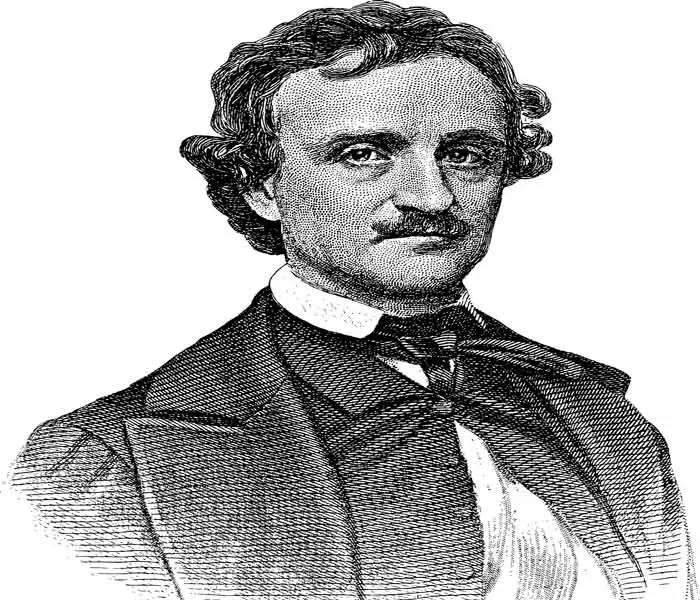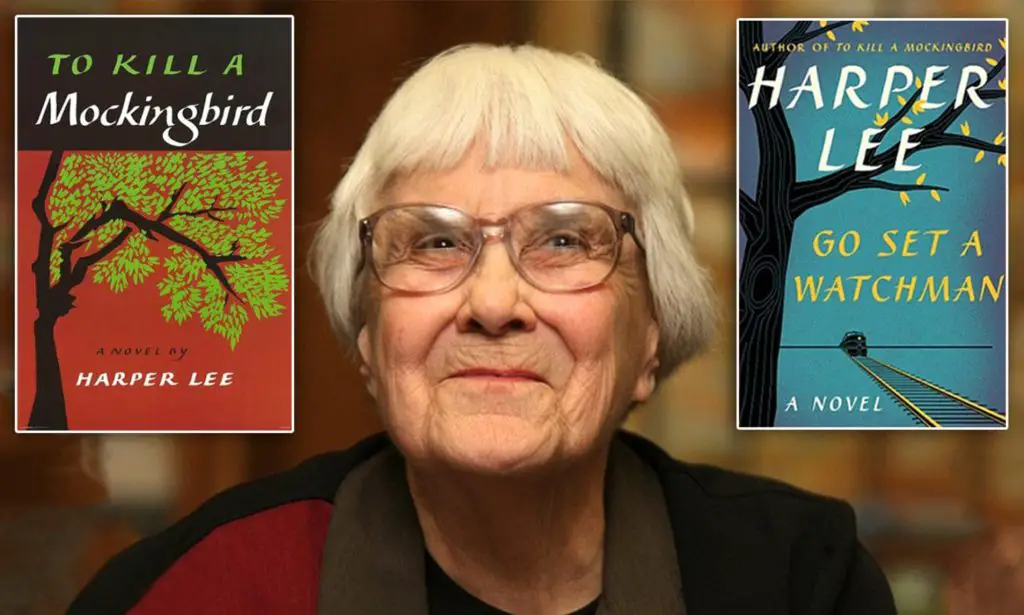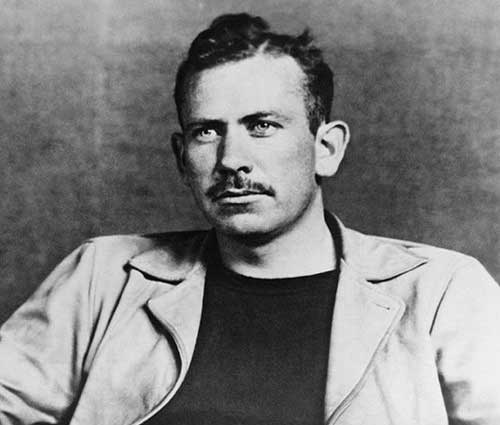Ah, you’re diving into the world of Edgar Allan Poe, where shadows dance and mysteries unfold! Within the ink-stained pages of his timeless works, two unforgettable characters emerge—one is Roderick Usher, who’s all troubled and gloomy in “The Fall of the House of Usher.” The other is this person without a name who’s hiding a big secret in “The Tell-Tale Heart.”

They’re like characters you can’t forget, and we’re going to explore their stories to see why they’re so memorable. It’s like taking a trip into Poe’s imagination, where creepy feelings and unforgettable characters come together in really cool stories. Ready to dive in?
What Character Did Poe Create?
Edgar Allan Poe, the master of macabre and mysterious tales, created a plethora of memorable characters in his works. Here are details about some of the best and notable characters:
- Madeline Usher (The Fall of the House of Usher):
Description: Madeline is Roderick Usher’s twin sister. She suffers from an unspecified illness and is entombed prematurely.
Personality: Madeline’s presence adds to the overall sense of dread and supernatural elements in the story. Her mysterious return from the dead contributes to the story’s gothic atmosphere.
- Fortunato (The Cask of Amontillado):
Description: Fortunato is a wine connoisseur who falls victim to Montresor’s vengeful plot.
Personality: Despite his expertise in wine, Fortunato is portrayed as arrogant and easily led astray. His tragic fate highlights themes of deception and the consequences of hubris.
- Annabel Lee (Annabel Lee):
Description: Annabel Lee is the young and beautiful love interest in Poe’s poem of the same name.
Personality: Pure and innocent, Annabel Lee becomes the focus of a tragic love story. Her untimely death and the narrator’s grief elevate the poem to a poignant exploration of love and loss.
- The Raven (The Raven):
Description: The Raven is a mysterious, talking bird that visits the narrator in the poem.
Personality: The Raven serves as a harbinger of doom and a symbol of the narrator’s descent into madness. Its repeated refrain of “Nevermore” adds a haunting and melancholic tone to the poem.
- The Narrator (The Tell-Tale Heart):
Description: The unnamed narrator tells the story of murdering an old man with a “vulture eye.”
Personality: Unreliable and disturbed, the narrator’s descent into madness is a central theme. The tale explores the thin line between sanity and insanity, adding psychological depth to the narrative.
- Eleonora (Eleonora):
Description: Eleonora is the narrator’s cousin and love interest in the short story.
Personality: Gentle and ethereal, Eleonora represents a fleeting and idyllic love. Her tragic fate contributes to the story’s exploration of love, loss, and the passage of time.
- King Pest (King Pest the First):
Description: King Pest is a mysterious and grotesque ruler in a tale that satirizes various political and social issues.
Personality: King Pest embodies the absurd and grotesque elements of the story. Poe uses the character to critique authority and societal norms in a darkly comedic manner.
- Lionizing (Lionizing):
Description: The story features an unnamed narrator who becomes obsessed with becoming fashionable and popular.
Personality: The narrator’s obsession with social standing and conformity leads to absurd and comical situations. Poe uses satire to comment on the superficial nature of societal approval.
- Sir Arthur Gordon Pym (The Narrative of Arthur Gordon Pym of Nantucket):
Description: Pym is the protagonist of Poe’s only complete novel, embarking on a series of perilous adventures at sea.
Personality: Pym is curious and adventurous, facing numerous challenges and encountering strange civilizations. The novel explores themes of survival, exploration, and the unknown.
- The Red Death (The Masque of the Red Death):
Description: The Red Death is a mysterious and deadly plague that ravages the kingdom in the short story.
Personality: While not a traditional character, the Red Death symbolizes mortality and the inevitability of death. The story explores the consequences of trying to escape or deny the reality of mortality.
These characters, each unique in their own way, contribute to the rich tapestry of Edgar Allan Poe’s literary legacy, showcasing his mastery of various genres and themes.
What Were Two Memorable Characters Created By Poe?
Edgar Allan Poe crafted many memorable characters, but two stand out prominently: Roderick Usher and the unnamed narrator in “The Tell-Tale Heart.”
Roderick Usher is a central figure in “The Fall of the House of Usher,” a tale of gothic horror. He is a complex character enveloped in a sense of impending darkness. In “The Fall of the House of Usher,” Roderick is tormented by his own fears and the supernatural aura surrounding his ancestral home. His character is marked by a deep sensitivity and a connection to the mysterious and eerie events unfolding in the story. I must say, Roderick Usher is a product of Poe’s exploration of the intricacies of the human mind and the thin line between reality and madness.
The unnamed narrator in “The Tell-Tale Heart” is another intriguing character, driven to madness by guilt and haunted by the relentless sound of a beating heart. The narrator insists on their sanity, but their obsession with the old man’s eye and the subsequent murder suggest otherwise. Poe cleverly blurs the line between reality and the narrator’s perception, leaving readers to question the narrator’s reliability. It’s a psychological rollercoaster, don’t you think?
Certainly, adding another iconic character by Poe would be incomplete without mentioning the Raven from “The Raven.” While not a human character, the Raven plays a significant role in the narrative, perched upon a bust in the narrator’s chamber. The repetition of its haunting refrain, “Nevermore,” adds a melancholic and mysterious atmosphere to the poem. The Raven becomes a symbol of the narrator’s grief and descent into madness, making it a memorable and symbolic creation in Poe’s body of work.
How Does Poe Present the Character of Roderick Usher?
Poe masterfully crafts Roderick as a complex and enigmatic figure, using various literary techniques to convey his personality. Roderick Usher, in “The Fall of the House of Usher,” is a guy with a lot going on.
- Sensitivity and Awareness:
First off, he’s super sensitive and aware of everything around him. This makes the whole story feel kind of spooky because he notices weird things happening in his family’s house.
- Physical and Mental Deterioration:
Roderick isn’t in great shape physically or mentally. Physically, he’s not doing great. Poe describes him as looking sickly and thin. And just like him, the Usher mansion is falling apart, showing this strong connection between Roderick and his family home.
- The “Mad Trist” Story:
There’s this story inside the story that Roderick shares with the narrator called the “Mad Trist.” It’s like a mirror of Roderick’s own struggles and fears. This blurs the line between reality and fiction, making his character more complex. This adds another layer to Roderick’s character.
- Artistic Pursuits – Music:
Roderick is also into music, and his talent mirrors his sensitivity. The “Haunted Palace” song he plays reflects his problems and the messed-up state of the Usher family. The music adds a cool touch to his character and ties everything together.
So, basically, Roderick Usher is a complicated guy. Poe paints him with lots of details, talking about his mind, body, and interests, making him a crucial part of the creepy vibe in the story.
How does Poe Present the Character of the unnamed narrator in The Tell-Tale Heart?
In “The Tell-Tale Heart,” Poe creates a character obsessed with an eye, planning a murder, and dealing with guilt. The character’s unreliability adds complexity to the story, making us think about madness and obsession. Let’s learn how he presents the legendary character.
- Not the Most Trustworthy Narrator:
The guy starts off by saying he’s not crazy, but everything he does suggests otherwise. It’s like he’s trying to pull a fast one on us.
- Eye Weirdness:
He’s seriously fixated on the old man’s eye, calling it a “vulture eye.” It’s odd and kinda creepy, right?
- Smart, but Kinda Crazy:
Despite his madness, the guy plans out the murder in a really careful way. It’s like he’s a mix of crazy and clever.
- Super Hearing:
He claims he hears things super well, which adds to the spooky vibe. Makes you wonder if he’s just making things up in his head.
- Heartbeat Drama:
There’s this beating heart sound that only he hears. It’s like his guilty conscience is haunting him. Poe uses it to keep us on the edge of our seats.
- No Feelings of Guilt:
The guy doesn’t feel bad about offing the old man. It’s like he’s a robot with no emotions, which is pretty messed up.
- Talking Directly to You:
He talks straight to you, trying to convince you he’s not nuts. It’s like he’s playing mind games with the reader.
- Story’s a Bit All Over the Place:
The way he tells the story is kinda jumbled, reflecting how messed up his mind is. It keeps you guessing about what’s real.
What Is Poe Most Famous For?
Edgar Allan Poe is most famous for his contributions to American literature, particularly in the genres of mystery, horror, and Gothic fiction.
His creepy short stories, such as “The Tell-Tale Heart” and “The Fall of the House of Usher,” showcase his mastery of macabre themes and psychological intensity.
But Poe’s crowning achievement and his most famous work is the 1845 poem “The Raven”. In this haunting poem, a talking raven torments a man with the repetitive and ominous word “Nevermore,” creating an atmosphere of melancholy and mystery.
Poe was a master of dark and mysterious tales, and his impact on literature is huge. People still love getting spooked by his stories today!
The Bottom Line
Poe’s stories are like a spooky rollercoaster for your mind. Roderick Usher and the unnamed narrator are like the biggest twists and turns. If you want a taste of Poe’s awesome writing, dive into his books. Let his words give you goosebumps and make your imagination dance. In his stories, you might find the charm of a long-gone time, where spooky and fascinating things go together. Go ahead, grab his books, and let the thrills begin!


